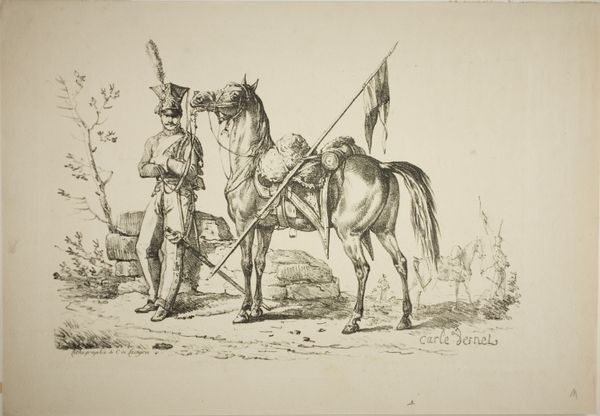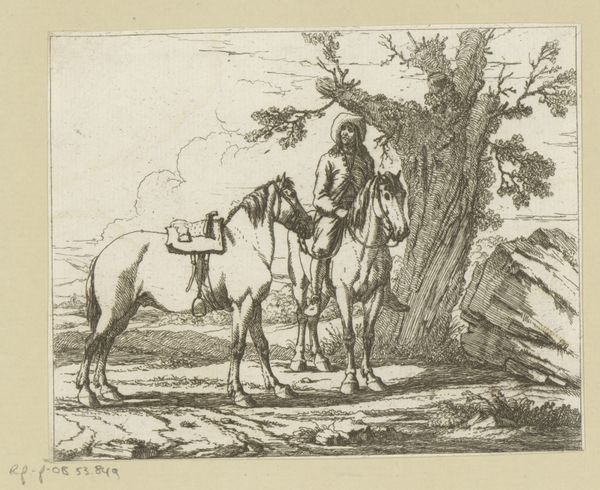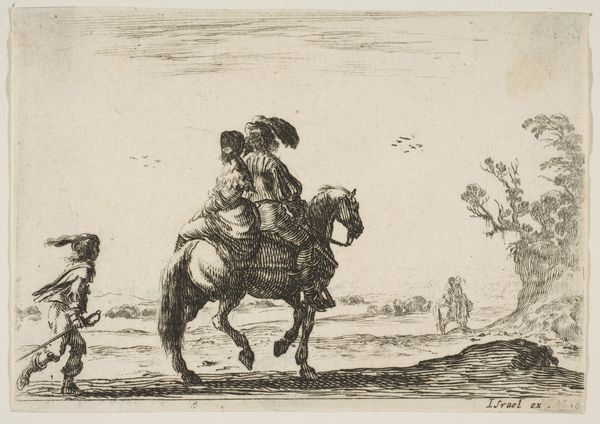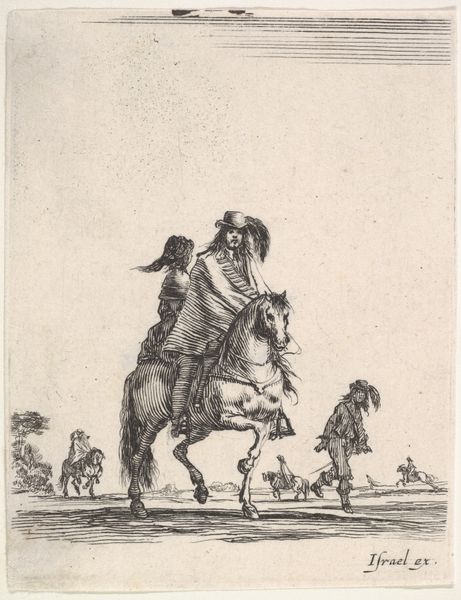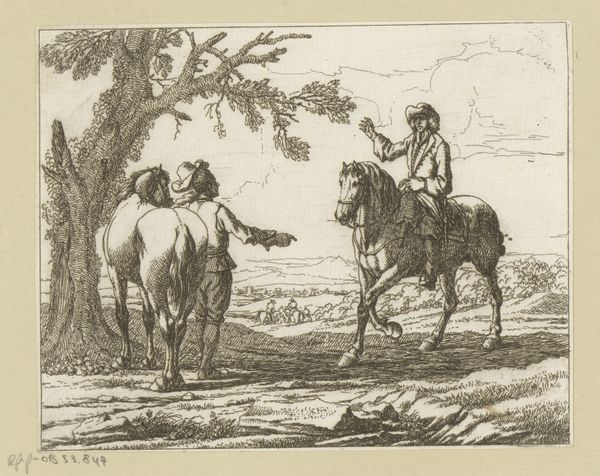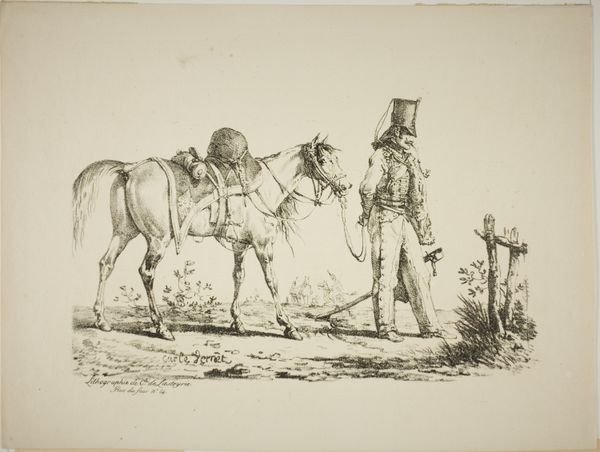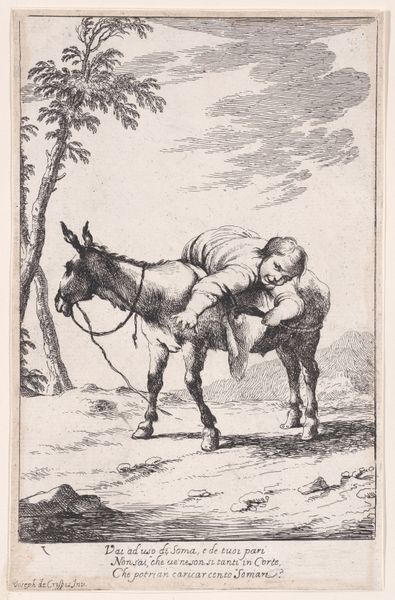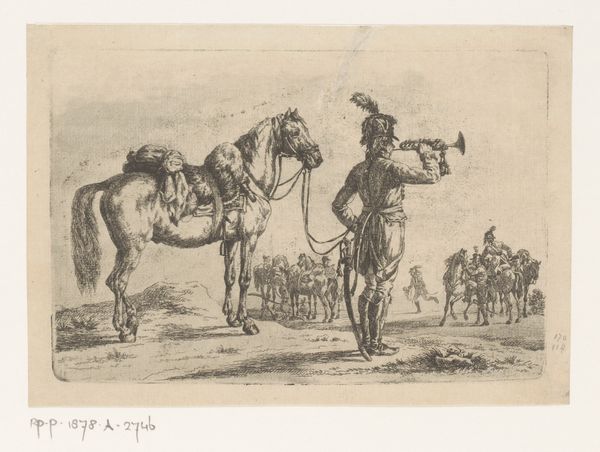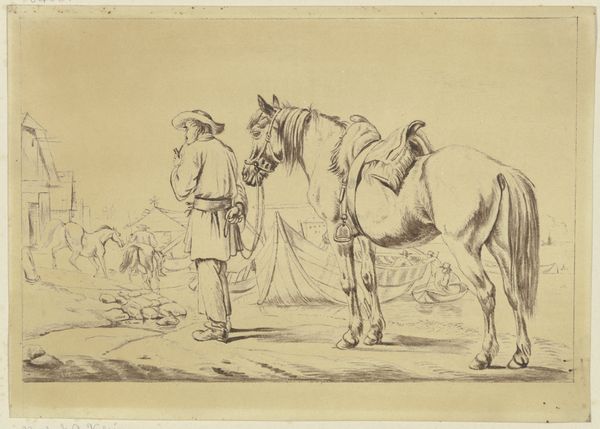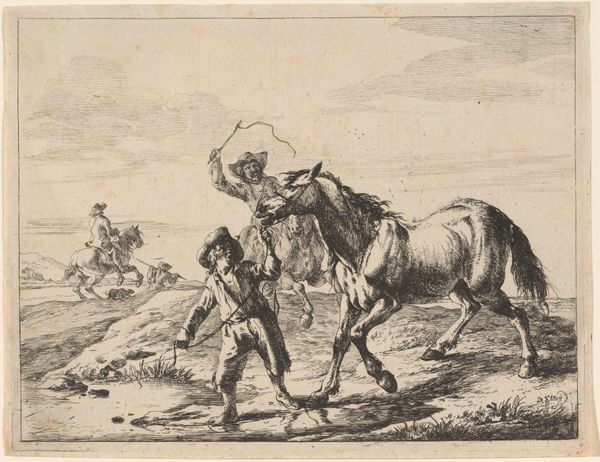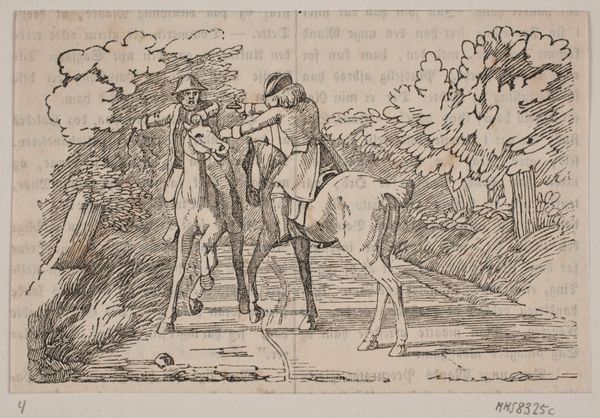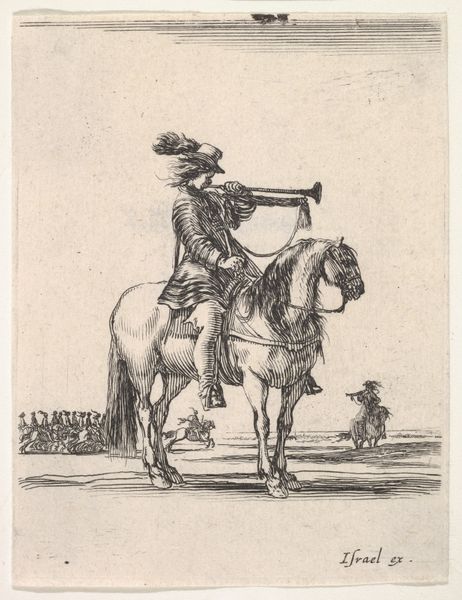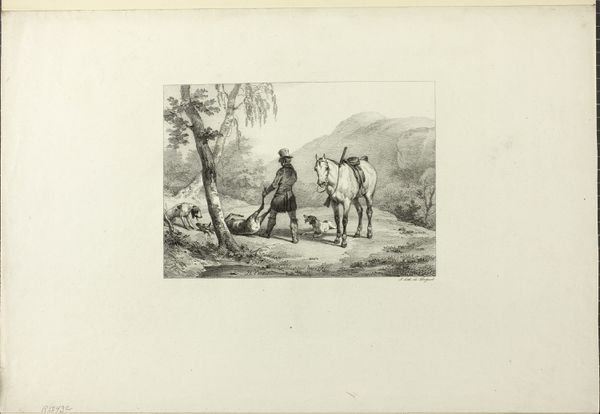
drawing, lithograph, print, paper, ink, pencil
#
portrait
#
drawing
#
ink drawing
#
narrative-art
#
ink painting
#
lithograph
# print
#
pen sketch
#
pencil sketch
#
figuration
#
paper
#
ink
#
romanticism
#
pencil
#
history-painting
Dimensions: 230 × 320 mm (image); 284 × 357 mm (sheet)
Copyright: Public Domain
Editor: This is "Trumpeter of the Riflemen," a lithograph made around 1817 by Carle Vernet. I am struck by how immediate the sketch feels. The cross-hatching gives so much depth with what seems like so little effort. What can you tell me about this print? Curator: Let's look at the labor embedded in this image. Lithography, unlike etching, allowed for quicker reproduction. This piece reflects the rise of print culture in post-revolutionary France and its influence on how military might was consumed. How do you think the mass production of images like this impacted the perception of war and soldiery? Editor: It's interesting to think about its purpose. Was it glorifying or documenting? Did it serve to familiarize the public with the military? Curator: It likely served several purposes. Romanticism glorified heroism, but it's also important to think about who had access to this print and how that access was mediated. Consider the paper quality, the ink used – these factors influenced its accessibility and lifespan, and the value associated with the image. Did the rise of mass-produced imagery diminish or augment its cultural cachet? Editor: That's a different way to approach it, thinking about the consumption of the artwork as a commodity tied into nationalism. I hadn't considered that the material aspects would hold so much historical and cultural relevance. Curator: Thinking about it as simply an image separates it from the economic and cultural forces at play. Everything, from the artist's choice of lithography, a relatively new technology at the time, to the paper it’s printed on, tells us something about its social function and the relationship between art and power. Editor: Thank you. I’m seeing it now not just as art, but also a material object embedded in a particular moment. Curator: Exactly, a nexus point between artistic skill, military power, and popular consumption.
Comments
No comments
Be the first to comment and join the conversation on the ultimate creative platform.
